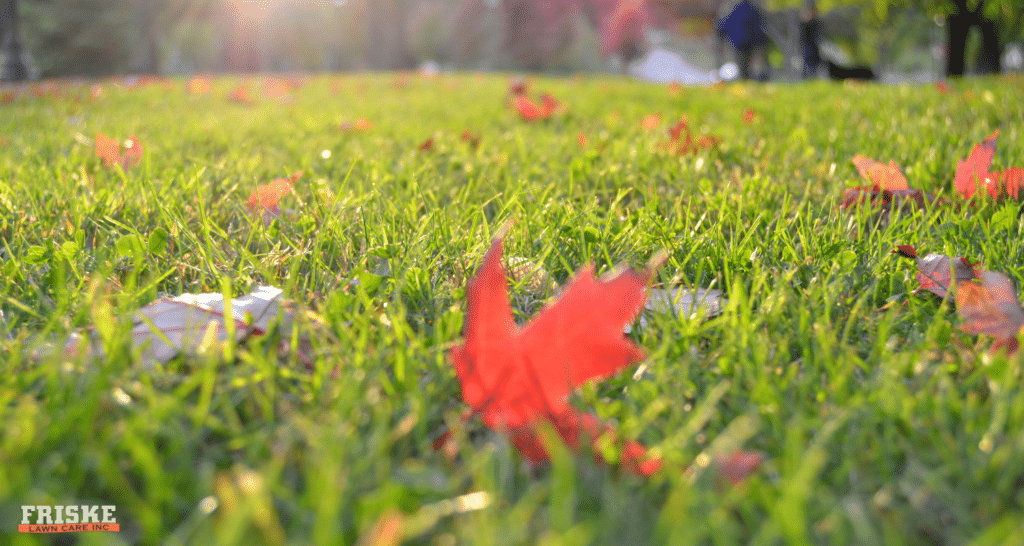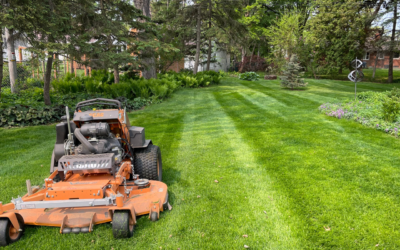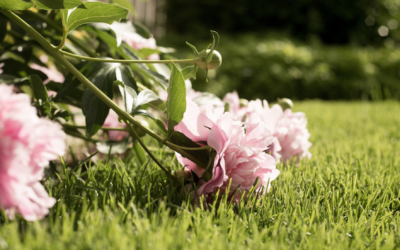As autumn begins to sweep across the Midwest, the changing leaves bring a reminder: it’s time to prepare your lawn for the colder months ahead. Ensuring your grass is healthy now can make a big difference in its vitality next spring. Below are some essential fall lawn care tips designed to help Midwest homeowners keep their lawns looking lush.
1. Last Mowing of the Season
The final few mows of the season are crucial. As temperatures begin to drop, gradually lower the cutting base of your mower to help your grass winter well without becoming too long, which can lead to diseases like snow mold. The ideal grass height going into winter is about 2-2.5 inches. This shorter height helps the soil dry quicker in spring, reducing disease risk and promoting healthier early growth.
2. Fertilization
Fall is the most important time to fertilize your lawn in the Midwest. Applying a fall-specific fertilizer can help strengthen roots and increase nitrogen storage for an early spring green-up. Look for fertilizers that are high in potassium, which enhances cold resistance and overall health of the grass.
3. Weed Control
Managing weeds in the fall can greatly reduce their numbers in the spring. Apply a pre-emergent herbicide to prevent winter weeds from sprouting and use a post-emergent if you already have weeds present. This dual approach helps ensure that your lawn stays as weed-free as possible throughout the colder months.
4. Aeration
Soil compaction can kill grass by preventing necessary air, water, and nutrients from reaching the roots. Aerating your lawn by removing small plugs of soil can improve the health of your grass. This process should be done annually in the fall to ensure the best results. Aerated lawns absorb water and nutrients more efficiently, promoting a healthier and more resilient lawn.
5. Overseeding
If your lawn is thin or patchy, fall is a perfect time for overseeding. Overseeding existing grass with a blend suited for your regional climate can help fill in bare spots and increase the density of your lawn, which in turn reduces weed outbreaks. After seeding, keep the soil consistently moist by watering lightly and frequently until the new grass is established.
6. Leaf Management
While a blanket of leaves can look picturesque, too many leaves on your lawn can suffocate your grass and foster fungal diseases. Regularly rake or use a leaf blower to clear them away. If you have a mulching mower, consider mowing over a light layer of leaves to chop them into a fine mulch that can provide nutrients to your lawn.
7. Preparing Equipment for Storage
Finally, don’t forget to care for your lawn care equipment. Clean and perform maintenance on your mower, trimmer, and other tools before storing them for the winter. This can include changing the oil, replacing the spark plug, and sharpening blades. Proper maintenance ensures that your equipment is ready to go when spring arrives.
If you find your fall lawn care to-do list a bit overwhelming, consider calling Friske Lawn Care. We’re here to help tackle those tasks and ensure your lawn is prepped and ready for winter. Happy fall y’all!
Organic Lawn Care Tips for Eco-Friendly Homeowners
As more homeowners become environmentally conscious, the shift towards organic lawn care practices is becoming increasingly popular. Not only does it ensure a beautiful lawn, but it also protects the health of your family, pets, and the local ecosystem. Here’s a guide...
The Benefits of Professional Lawn Care: Why Hiring a Lawn Mowing Company is Worth It
Maintaining a lush, green lawn is a point of pride for many homeowners. However, achieving that picture-perfect lawn requires time, effort, and expertise. As the summer months approach and lawns begin to grow rapidly, many homeowners find themselves facing the...
10 Low-Maintenance Plants Perfect for Busy Moms
In the hustle and bustle of everyday life, busy moms often find it challenging to devote extensive time to garden maintenance. However, that doesn't mean they can't enjoy a beautiful and vibrant garden. With the right selection of low-maintenance plants, moms can...




